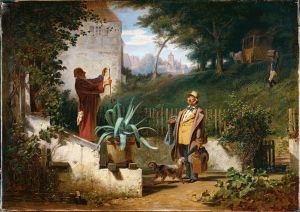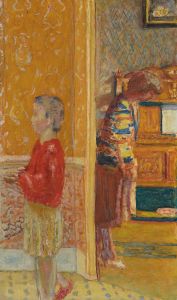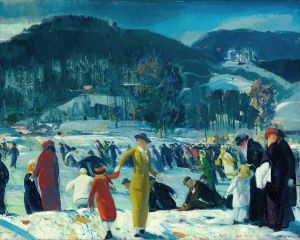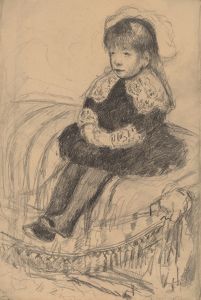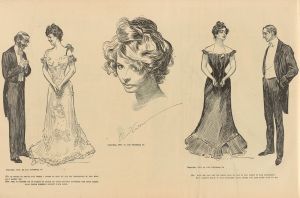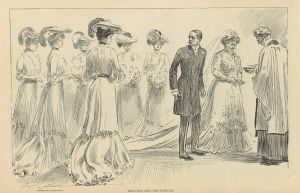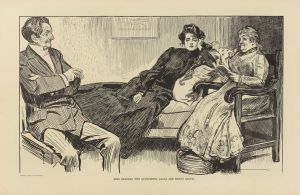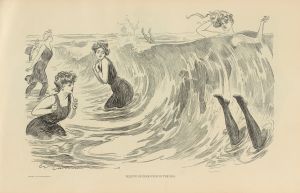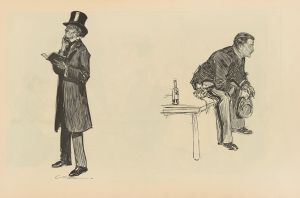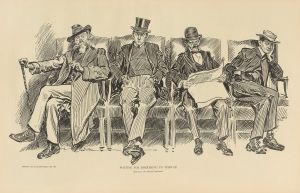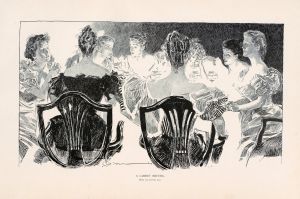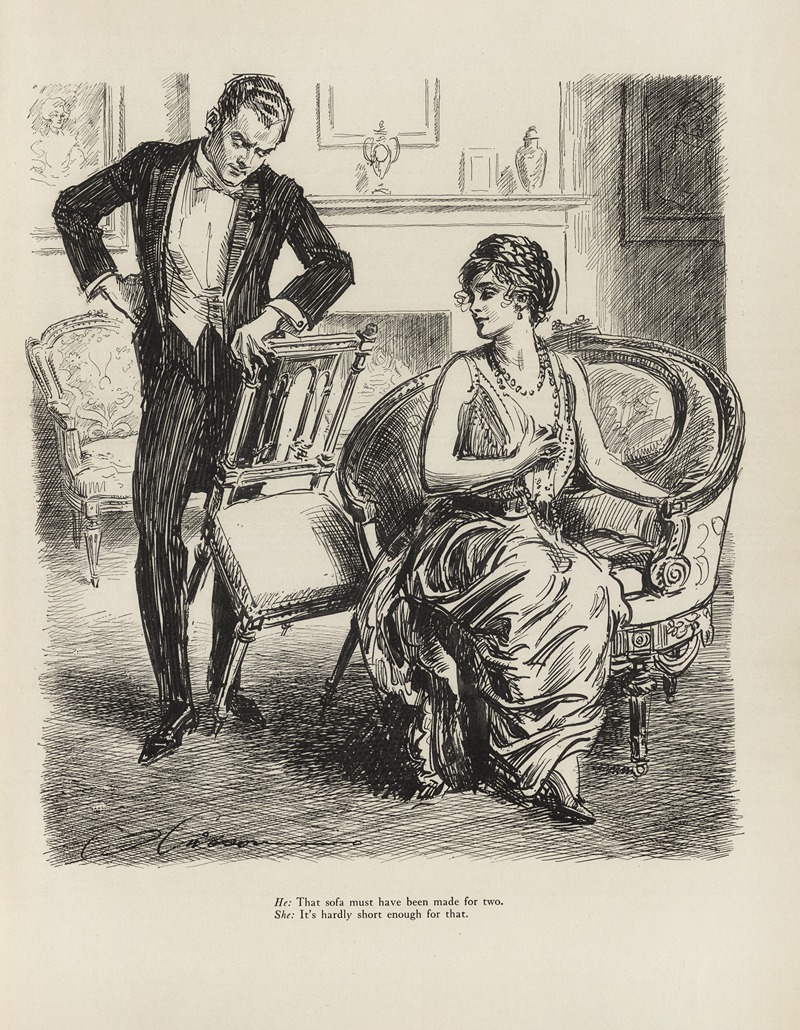
He; That sofa must have been made for two
A hand-painted replica of Charles Dana Gibson’s masterpiece He; That sofa must have been made for two, meticulously crafted by professional artists to capture the true essence of the original. Each piece is created with museum-quality canvas and rare mineral pigments, carefully painted by experienced artists with delicate brushstrokes and rich, layered colors to perfectly recreate the texture of the original artwork. Unlike machine-printed reproductions, this hand-painted version brings the painting to life, infused with the artist’s emotions and skill in every stroke. Whether for personal collection or home decoration, it instantly elevates the artistic atmosphere of any space.
Charles Dana Gibson was an influential American illustrator best known for creating the "Gibson Girl," a representation of the idealized American woman at the turn of the 20th century. His work was widely published in magazines such as Life, Harper's Weekly, and Scribner's, and he became one of the most celebrated illustrators of his time.
The illustration "He; That sofa must have been made for two" is one of Gibson's many works that capture the social dynamics and gender roles of his era. This particular piece, like many of Gibson's illustrations, is characterized by its detailed line work and its ability to convey a narrative through a single image. The title suggests a scene involving a sofa designed for two people, hinting at themes of intimacy or social interaction, which were common in Gibson's work.
Gibson's illustrations often depicted scenes of courtship and social life among the upper classes, reflecting the societal norms and expectations of his time. The "Gibson Girl" became an iconic symbol of femininity, independence, and beauty, influencing fashion and culture in the early 1900s. She was often portrayed as confident, stylish, and somewhat aloof, embodying the aspirations of many young women during that period.
The context of "He; That sofa must have been made for two" fits within Gibson's broader body of work, which frequently explored the interactions between men and women. His illustrations were not only artistic expressions but also social commentaries, capturing the nuances of gender relations and the evolving roles of women in society.
Gibson's work was highly regarded for its technical skill and its ability to capture the spirit of the age. His illustrations were more than just images; they were stories that resonated with the public, offering both entertainment and reflection. The humor and wit often present in his titles and compositions added an additional layer of engagement for the viewer.
While specific details about the creation and publication of "He; That sofa must have been made for two" are not widely documented, it is consistent with Gibson's style and thematic interests. His work remains a valuable resource for understanding the cultural and social history of the United States during the late 19th and early 20th centuries.
Gibson's influence extended beyond illustration; he played a significant role in shaping the visual culture of his time. The "Gibson Girl" became a cultural phenomenon, influencing fashion, advertising, and even the perception of women's roles in society. Gibson's legacy is evident in the continued interest in his work and the enduring appeal of his illustrations.
In summary, "He; That sofa must have been made for two" is a reflection of Charles Dana Gibson's artistic talent and his ability to capture the essence of his era. Through his illustrations, Gibson provided a window into the social dynamics of his time, leaving a lasting impact on American art and culture.





